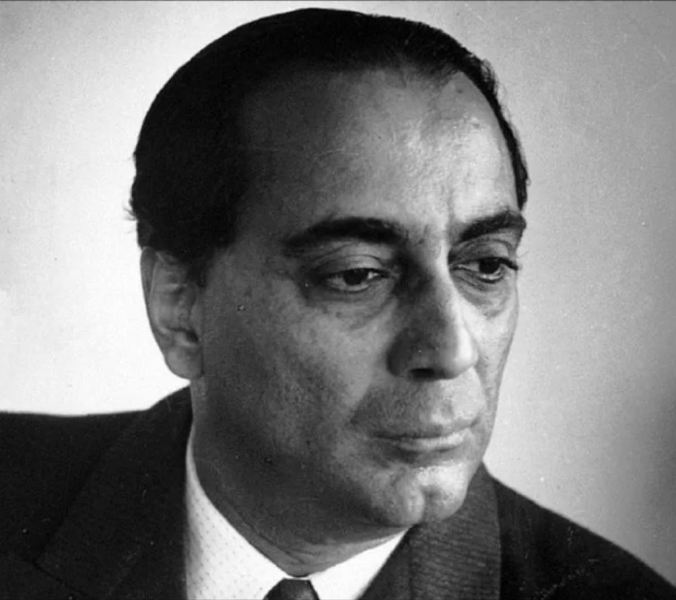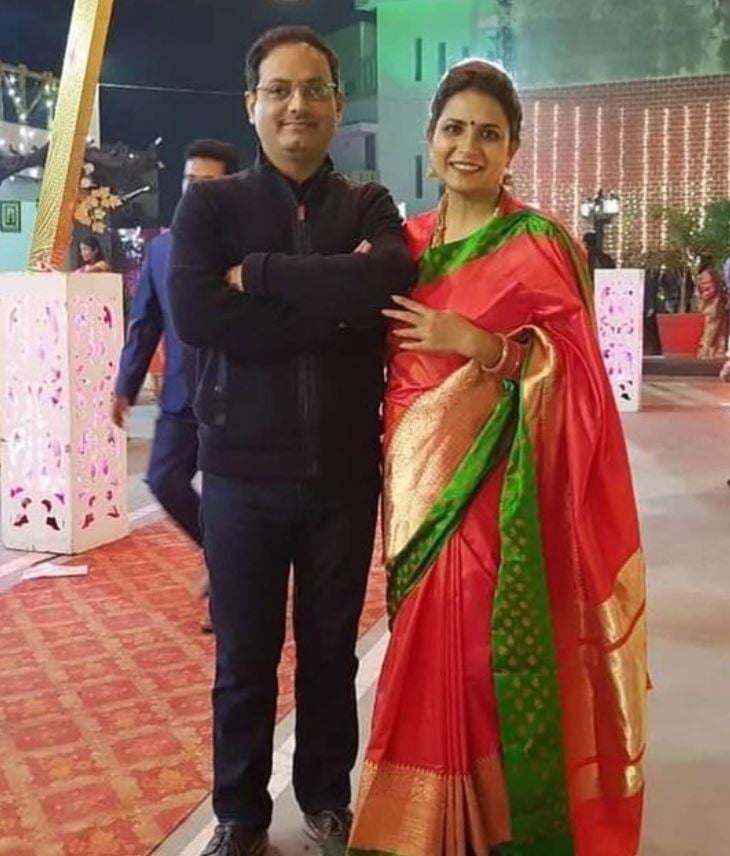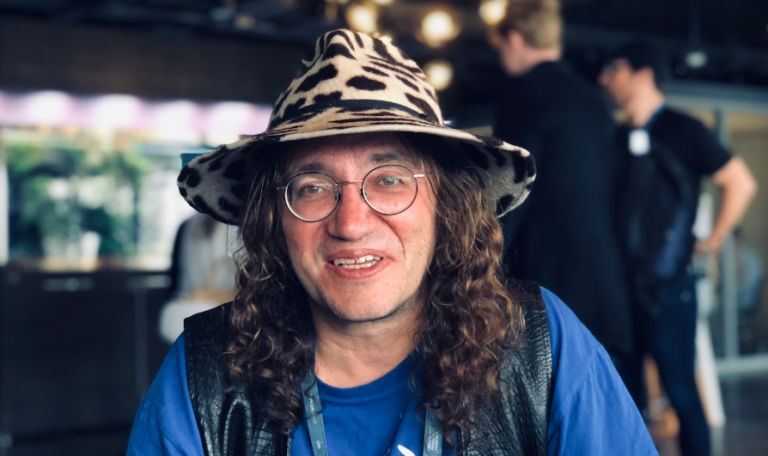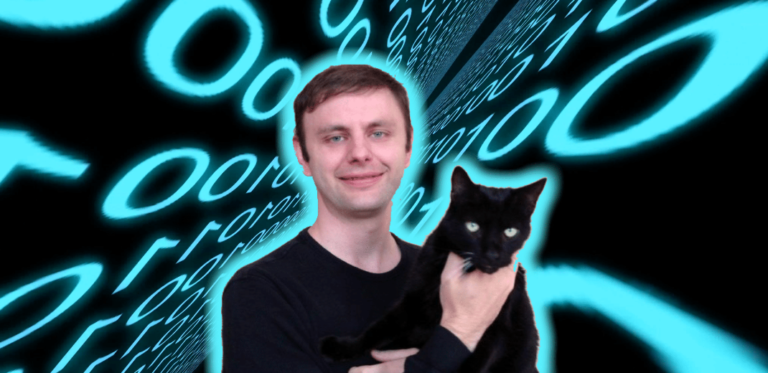
| Bio/Wiki | |
|---|---|
| Full name | Homi Jehangir Bhabha [1]Vigyan Prasar |
| Profession | Nuclear Physicist |
| Known for | Being the Father of the Indian nuclear programme [2]The Better India |
| Physical Stats & More | |
| Eye Colour | Black |
| Hair Colour | Black |
| Career | |
| Positions Held | 1939: Reader at the Indian Institute of Science 1944: Cosmic Ray Research Unit 1944: Tata Institute of Fundamental Research (TIFR) 1948: The Atomic Energy Commission 1954: Chairperson of the Atomic Energy Establishment Trombay (AEET) and its department of Atomic Energy (DAE) 1955: President of the United Nations Conference on the Peaceful Uses of Atomic Energy in Geneva 1958: The Foreign Honorary Member of the American Academy of Arts and Sciences 1962: A member of the Indian Cabinet’s Scientific Advisory Committee |
| Awards, Honours, Achievements | • 1942: The Adams Prize • 1954: Padma Bhushan • 1951, 1953 to 1956: Nominated for the Physics Nobel Prize • Recipient of the Fellow of the Royal Society |
| Personal Life | |
| Date of Birth | 30 October 1909 (Saturday) |
| Birthplace | Bombay, Bombay Presidency, British India (present-day Mumbai, Maharashtra, India) |
| Date of Death | 24 January 1966 |
| Place of Death | Mont Blanc, Alps, France/Italy |
| Age (at the time of death) | 56 Years |
| Death Cause | Air India Flight 101 Crash near Mont Blanc [3]TFI Post |
| Zodiac sign | Scorpio |
| Nationality | Indian |
| Hometown | Bombay, Bombay Presidency, British India |
| School | Bombay’s Cathedral and John Connon School |
| College/University | • Elphinstone College, Mumbai, Maharashtra • Royal Institute of Science, Great Britain • Caius College of Cambridge University, England |
| Educational Qualification(s) [4]TFI Post | • He passed Senior Cambridge Examination with Honours from Elphinstone College at the age of 15. • In 1927, he attended Royal Institute of Science. • Later, He pursued a Bachelor of Science at Caius College of Cambridge University. • In 1933, he earned a doctorate degree in nuclear physics at Cambridge University. |
| Ethnicity | Parsi [5]TFI Post |
| Relationships & More | |
| Marital Status (at the time of death) | Unmarried |
| Family | |
| Wife | N/A |
| Parents | Father– Jehangir Hormusji Bhabha (lawyer) Mother– Meherbai Bhabha (the granddaughter of philanthropist Sir Dinshaw Petit) |
| Siblings | Brother– Jamshed Bhabha (founder and lifelong chairman of the National Centre for the Performing Arts (NCPA) at Nariman Point) |

Some Lesser Known Facts About Homi J. Bhabha
- Homi J. Bhabha, an Indian nuclear physicist, played a significant role in the development of India’s nuclear program. He was the founding director and professor of physics at the Tata Institute of Fundamental Research (TIFR) in Mumbai, Maharashtra. Due to his contributions, he is often referred to as the “Father of the Indian nuclear program.” Additionally, Bhabha established the Atomic Energy Establishment, Trombay (AEET), which was later renamed the Bhabha Atomic Research Centre in his honor. These scientific institutions have played a crucial role in the advancement of nuclear weapons in India. In recognition of his achievements, Bhabha received the Adams Prize in 1942 and the Padma Bhushan in 1954. He was also nominated for the Physics Nobel Prize in 1951 and from 1953 to 1956. Furthermore, Bhabha was a Fellow of the Royal Society.
- Homi J. Bhabha’s father, Jehangir Hormusji Bhabha, grew up in Bangalore and obtained his law degree in England. After completing his studies, he returned to India and began practicing law in Mysore as part of the state’s judicial service. He later married Meherbai and they settled in Bombay, where Homi spent his childhood. Homi was named after his grandfather Hormusji Bhabha, who served as the Inspector General of Education in Mysore. Homi’s aunt, Meherbai, was married to Dorab Tata, the eldest son of Jamsetji Nusserwanji Tata. Jehangir Hormusji Bhabha is Homi J. Bhabha’s paternal grandfather.
- Homi’s father and uncle had desired him to become an engineer, with the goal of joining Tata Iron and Steel Company in Jamshedpur. However, during his time at Cambridge University, his interest in theoretical physics grew immensely. Homi decided to write a letter to his father, expressing his passion for his studies. He emphasized that a career in business or engineering did not align with his natural inclination, temperament, and personal beliefs. Instead, his true devotion lay in the field of physics, and he firmly believed that he would make significant contributions in this area. Homi strongly believed that each person could excel in their chosen field of passion and talent, and for him, it was physics. He was driven by an intense desire to pursue this subject, and it became his sole ambition in life. He was determined to make it a reality, as he considered it an essential pursuit. Homi also mentioned that his passion for physics was intense, and he felt compelled to pursue it at some point in his life. His sole ambition was focused on this field, without any aspirations of becoming a successful individual or leading a large corporation. While recognizing that some individuals found satisfaction in such endeavors, Homi wholeheartedly encouraged them to pursue those paths.
- Bhabha achieved a first-class result in the Mechanical Sciences Tripos exam in 1930 due to the support of his parents and his passion for science. While preparing for his PhD in theoretical physics, he started working at the Cavendish Laboratory, where James Chadwick made numerous scientific discoveries. Bhabha was awarded the Salomons Studentship in Engineering for the academic year 1931-1932 and the Rouse Ball Travelling Studentship in mathematics in 1932, after excelling in his Mathematical Tripos. His lifelong passion was conducting experiments on particles that emitted radiation, and his physics research brought great recognition to India, inspiring other prominent Indian physicists like Piara Singh Gill to switch their focus to nuclear physics.
- Before earning his doctorate degree in nuclear physics in January 1933, Homi Bhabha published his inaugural scientific paper titled “The Absorption of Cosmic Radiation.” This paper delved into the creation of cosmic showers, which occur due to secondary cosmic ray particles.
- Homi J. Bhabha, a young individual, was awarded the Isaac Newton Studentship for three years in 1934 based on his doctoral scientific paper. Under the mentorship of Ralph H. Fowler, he successfully completed his doctoral studies in 1935. Additionally, during this period, Bhabha engaged in research at Cambridge and collaborated with Niels Bohr in Copenhagen.
- In 1935, Homi Bhabha released a publication in the Proceedings of the Royal Society, Series A, outlining the calculations for determining the cross-section of electron-positron scattering. This phenomenon was later named Bhabha scattering in recognition of Bhabha’s significant contributions to nuclear physics. The following year, Bhabha collaborated with Walter Heitler on a paper titled “The Passage of Fast Electrons and the Theory of Cosmic Showers,” which served as a continuation of their previous work. In this paper, they conducted numerous numerical estimates and calculations, including an analysis of Bruno Rossi and Pierre Victor Auger’s experimental observations on cosmic ray showers conducted prior to their study. Their calculations successfully aligned with the findings of Rossi and Auger’s experiments, providing further support for the concept of Bhabha scattering.
- Homi Bhabha made a significant discovery during his experimental observations and studies, revealing that these particles served as experimental proof for Albert Einstein’s theory of relativity. In recognition of his work, Bhabha received the prestigious Senior Studentship of the 1851 exhibition in 1937. This studentship provided him with the opportunity to continue his research at the University of Cambridge until the outbreak of World War II in 1939.
- In 1939, Bhabha returned to India at the start of World War II. He took up a position as a Reader in the Physics Department at the Indian Institute of Science, which was under the leadership of the renowned physicist C. V. Raman. During his time in India, Bhabha encouraged influential leaders of the Congress party, specifically Pandit Jawaharlal Nehru, who would later become India’s first prime minister, to initiate nuclear programs in the country. Bhabha penned a letter to the inaugural Prime Minister of India, advocating for the establishment of a nuclear power station. In his letter, Bhabha outlined the necessity for an Atomic Energy Commission composed of three individuals endowed with executive authority. This commission would then report directly to the Prime Minister, ensuring streamlined decision-making and accountability. Additionally, Bhabha depicted C. V. Raman’s sketch as an illustration.
- On March 20, 1942, Bhabha’s appointment as a Fellow of the Royal Society was confirmed.
- In March 1944, while working at the Indian Institute of Science, Bhabha wrote a letter to Sir Dorabji Tata Trust expressing the need for dedicated facilities in the field of nuclear physics, cosmic rays, high energy physics, and other branches of physics in Indian institutes. He emphasized the necessity of establishing a specific institute for fundamental research in physics. The Tata Trust agreed to Bhabha’s proposal and took on the financial responsibility of establishing a core nuclear physics institute in 1944.<br><br>The government of Bombay also agreed to become a joint founder of the proposed institute, which eventually led to its establishment in Bombay. In 1945, an existing building was inaugurated as the Tata Institute of Fundamental Research (TIFR). Bhabha had discussions with Jawaharlal Nehru about the layout plan for TIFR. However, Bhabha soon realized that the premises were inadequate for conducting nuclear experiments. He urged the government to construct a dedicated facility, which resulted in the establishment of the Atomic Energy Establishment Trombay (AEET) in Trombay in 1954. The Department of Atomic Energy (DAE) was also established during the same year.<br><br>In 1957, Homi J Bhabha and Jawaharlal Nehru stood together during the inauguration of a reactor at the Atomic Energy Center in Mumbai. Mumbai is now home to the prestigious Bhabha Atomic Research Centre (BARC).
- Homi Bhabha established the Cosmic Ray Research Unit in 1944 with a special research grant from the Sir Dorab Tata Trust. This research center allowed Bhabha to focus on nuclear weapons and the theory of point particle movement. Harish-Chandra, one of Bhabha’s students, assisted him in various physics experiments at the institute. In 1945, Bhabha, with the help of J.R.D. Tata, founded the Tata Institute of Fundamental Research in Mumbai. In 1948, Bhabha became the first chairperson of the Atomic Energy Commission and collaborated with J.R.D. Tata.
- Homi J. Bhabha was appointed by Jawaharlal Nehru in 1948 to lead India’s nuclear program and authorized him to develop nuclear weapons. Bhabha represented India at the IAEA conferences held in Geneva during the 1950s. Additionally, he served as the president of the United Nations Conference on the Peaceful Uses of Atomic Energy in Geneva, Switzerland in 1955 and represented India in multiple International Atomic Energy forums. A photograph from August 20, 1955, captures Bhabha attending the International Conference on the Peaceful Uses of Atomic Energy in Geneva, Switzerland.
- In 1958, Homi Bhabha became a Foreign Honorary Member of the American Academy of Arts and Sciences. He is recognized for his role in India’s three-stage nuclear power program. Bhabha proposed that India should prioritize transitioning to thorium-based nuclear power generation due to its abundant reserves, exceeding 500,000 tons, compared to the limited uranium reserves. The program would begin with the use of natural uranium in the first generation of atomic power stations. The plutonium produced by these stations would then be utilized in a second generation of power stations, which would convert thorium into U-233 or depleted uranium into additional plutonium through breeding. This second generation would serve as an intermediate step towards the third generation, known as breeder power stations. These breeder power stations would produce more U-238 than they consume while generating electricity. Thus, India’s Nuclear Power Program consists of three stages.
- Following the China-India conflict in 1962, Bhabha shifted his focus towards the advancement of nuclear weaponry. Simultaneously, he gained international acclaim for his experiments and calculations on the likelihood of positron-electron scattering, commonly referred to as the Bhabha scattering. During this period, Bhabha made significant contributions to both Compton scattering and the R-process. In 1954, he was bestowed with the Padma Bhushan by the Indian government in recognition of his achievements. Later on, Bhabha played a crucial role in establishing the Indian National Committee for Space Research, with assistance from Vikram Sarabhai, while serving as a member of the Indian Cabinet’s Scientific Advisory Committee.
- In 1963, Homi Bhabha collaborated with Vikram Sarabhai to establish the Thumba Equatorial Rocket Launching Station (TERLS) in Thiruvananthapuram, which marked the first Indian Rocket station. The inaugural rocket flight took place in the same year. Additionally, Vikram Sarabhai played a vital role in supporting Homi J. Bhabha in establishing a scientific center at IIM Ahmedabad. Together, Vikram Sarabhai and Homi J. Bhabha stood side by side at the Thumba Rocket launch site, witnessing India’s historic first rocket launch at Thumba.
- In 1965, Homi made a groundbreaking announcement on All India Radio that left the entire world astounded. He expressed his ability to create a nuclear bomb within a span of eighteen months, provided he received the Government of India’s authorization. Additionally, he held firm beliefs in the implementation of peaceful nuclear energy initiatives, foreseeing their potential to revolutionize energy, agriculture, and medicine.
- Homi J. Bhabha tragically passed away in 1966 due to a plane crash on Mont Blanc while en route to a meeting of the International Atomic Energy Agency’s Scientific Advisory Committee in Vienna, Austria. The unfortunate incident occurred due to a miscommunication between the pilot and the Geneva Airport regarding the plane’s location, resulting in a collision with the mountain.
- After his plane crash, there were numerous theories circulating about the possibility of Homi Bhabha’s death being a deliberate murder intended to hinder India’s nuclear program. The involvement of the Central Intelligence Agency (CIA) was suggested, and evidence such as the recovery of an Indian diplomatic bag near the crash site in 2012 was presented. In the book titled ‘Conversations with the Crow’ by Gregory Douglas, it was claimed that the CIA was responsible for Bhabha’s killing, alleging that a bomb had been placed in the cargo section of the plane. The Times of India reported on this theory and also shared a photograph of a bag retrieved from the crash site, containing mail originating from India’s foreign ministry.
- The Mumbai-based Atomic energy Establishment underwent a name change to the Bhabha Atomic Research Centre (BARC) in order to pay tribute to Homi J. Bhabha’s remarkable contributions to the fields of science and engineering. In addition to his roles as a physicist and botanist, Bhabha also had a passion for painting and a deep appreciation for classical music and opera. As a testament to his artistic abilities, Bhabha even created a portrait of Prof. P. M. S. Blackett.
- Homi J. Bhabha, a distinguished Indian scientist, played a vital role in promoting research in various fields including electronics, space science, radio astronomy, and microbiology. An awe-inspiring statue of Homi J. Bhabha has been erected at the Birla Industrial & Technological Museum in Kolkata.
- Homi J. Bhabha’s dream project, the radio telescope in Ooty, was successfully realized in 1970. In recognition of his remarkable contributions to science and engineering, the government of India released a stamp in 1966 bearing the image of Homi Jehangir Bhabha.
- The Homi Bhabha Fellowship Council has been awarding scholarships in the name of Homi J. Bhabha Fellowships to students since 1967. Several prestigious engineering and science institutes in India, such as the Homi Bhabha National Institute and the Homi J. Bhabha Centre for Science Education in Mumbai, are named after him. Homi Bhabha resided at Mehrangir, a bungalow located in Malabar Hill, for most of his life. After his passing, his brother Jamshed Bhabha inherited the property. Subsequently, Jamshed donated the bungalow to the National Centre for the Performing Arts, which auctioned it in 2014 for Rs 372 crores. The funds raised from the auction were used for the maintenance and development of the nuclear center. Here is a visual representation of the captivating bungalow once owned by Homi J. Bhabha.
- In July 2008, TBRNews.org, a news media outlet, released a recorded phone conversation that revealed a conspiracy surrounding the planned assassination of Homi. The conversation discussed the difficulties encountered with India in the 1960s when they pursued the development of an atomic bomb and formed an alliance with Russia. The person speaking in the conversation specifically mentioned Homi J. Bhabha. This incident was extremely dangerous. Unfortunately, Homi encountered an accident while traveling to Vienna, which was intended to create more chaos. During the flight, a bomb detonated in the cargo hold of his Boeing 707, causing an explosion.
- The SonyLiv Channel released a web series called Rocket Boys in 2021, which depicted the lives of Homi J. Bhabha and Vikram Sarabhai. The roles of Homi J. Bhabha and Vikram Sarabhai were skillfully portrayed by Jim Sarbh and Ishwak Singh in the series.
- The particles known as ‘mesons’ were initially predicted by Homi J. Bhabha and later discovered by Neddermeyer and Anderson, who renamed them ‘muons.’ The formation of a shower through electromagnetic processes is represented by the Bhabha-Heitler picture. Bhabha was not only a brilliant scientist but also possessed a deep passion for music, exceptional artistic talent, remarkable engineering skills, and outstanding scientific abilities, making him a modern-day incarnation of Leonardo da Vinci. In 1941, Sir C V Raman delivered a speech at the Annual Meeting of the Indian Academy of Science in Nagpur.














+ There are no comments
Add yours